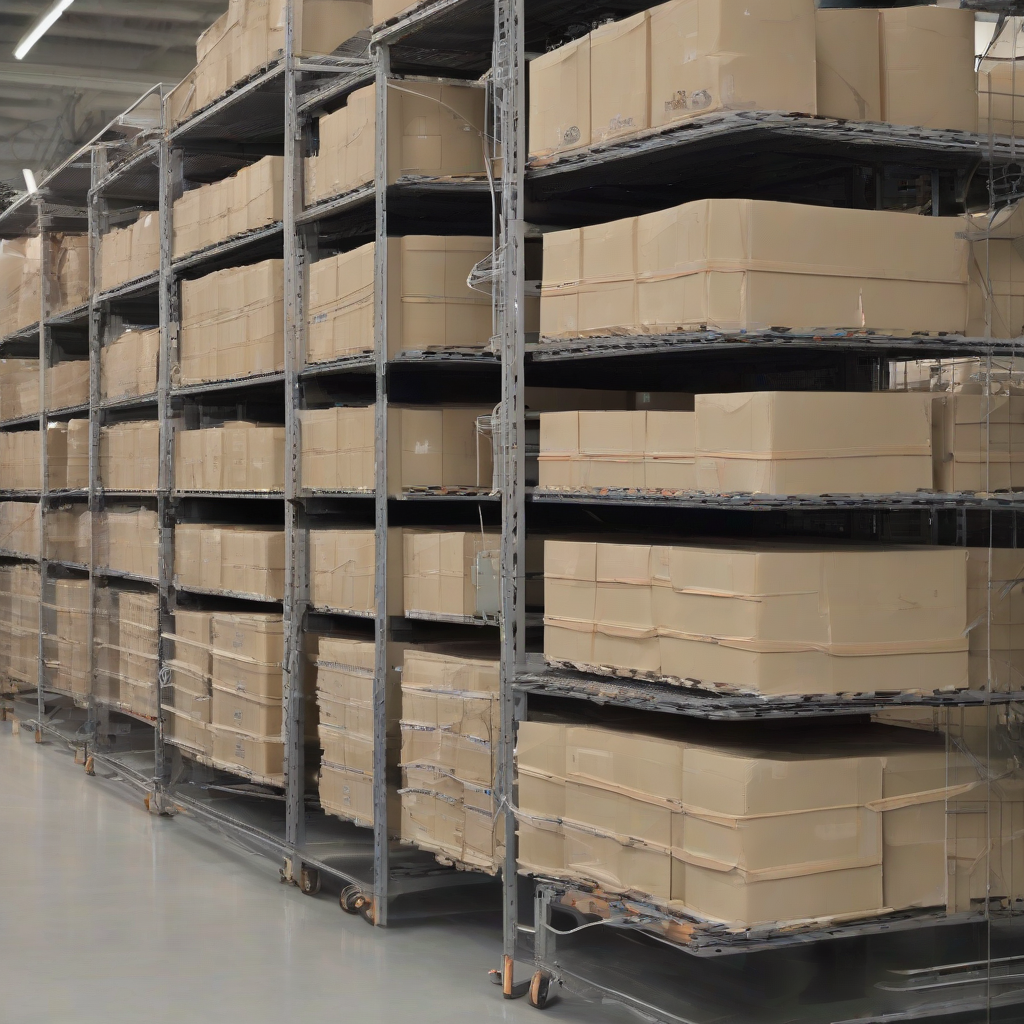Industrial Shelving and Racking: A Comprehensive Guide to Optimization and Efficiency
Understanding the Diverse World of Industrial Shelving and Racking
Industrial shelving and racking systems are the backbone of efficient warehouse and storage operations. They provide a structured and organized approach to storing goods, maximizing space utilization, and ensuring quick access to inventory. The sheer variety available, however, can be overwhelming. This guide explores the different types, their applications, and the crucial factors to consider when choosing the right system for your needs.
Types of Industrial Shelving:
- Selective Pallet Racking: This is the most common type, offering individual access to each pallet. Ideal for high-volume storage where frequent access is required. Variations include drive-in/drive-through racking for higher density storage.
- Cantilever Racking: Designed for storing long, bulky items like lumber or pipes. The arms extend from upright frames, allowing for easy access from one side.
- Double-Deep Racking: A space-saving solution that allows for two pallets deep, accessed using a forklift. Reduces aisle space compared to selective racking but requires careful planning for efficient stock rotation.
- Push-Back Racking: Pallet storage system where pallets are pushed back into a row, with the first-in, last-out principle. This is best for low-turnover items.
- Gravity Flow Racking: Utilizes the force of gravity to move pallets along inclined lanes, allowing for a first-in, first-out inventory management strategy.
- Mobile Shelving: Space-saving solution for archive storage or areas with limited floor space. Shelves are mounted on tracks, allowing for easy movement and access to specific sections.
- Mezzanine Floor Shelving: Creating a second level in a warehouse to increase vertical storage capacity, maximizing space utilization and increasing overall storage potential significantly. It is often used in conjunction with various types of shelving systems.
Choosing the Right Shelving System: Key Considerations
Selecting the optimal shelving system requires careful analysis of several key factors:
- Storage Needs: What types of goods need to be stored? What are their dimensions and weights? How often will items need to be accessed?
- Warehouse Layout: What is the available floor space? Are there height restrictions? What is the traffic flow pattern within the warehouse?
- Budget: Different shelving systems have varying costs. It is crucial to balance cost with functionality and long-term value.
- Safety: The chosen system must meet all relevant safety regulations to protect workers and inventory.
- Material Handling Equipment: Consider the type of forklift or other equipment used for handling pallets and goods. The shelving system must be compatible.
- Inventory Management System: The shelving system should integrate seamlessly with the warehouse management system (WMS) for efficient tracking and management of inventory.
- Scalability: Choose a system that can be expanded or modified to accommodate future growth in storage needs.
- Durability and Longevity: Industrial shelving should be constructed from high-quality materials that can withstand the rigors of daily use.
Optimizing Warehouse Space with Industrial Racking
Effective warehouse space utilization is paramount for maximizing operational efficiency and minimizing costs. Industrial racking plays a critical role in achieving this.
Space Optimization Techniques:
- Vertical Space Utilization: Utilizing height effectively with high-bay racking systems can significantly increase storage capacity without expanding floor space.
- Aisle Optimization: Proper aisle planning ensures easy access to goods while minimizing wasted space. Narrow aisle racking systems can help to reduce aisle width without compromising accessibility.
- Efficient Pallet Placement: Careful placement of pallets ensures maximum utilization of space within the racking system. Proper stock rotation strategies are also crucial for avoiding dead stock.
- Integration with other systems: Consider integrating the racking system with conveyors, lifts and other material handling equipment to streamline workflows and improve efficiency.
- Regular Audits and Adjustments: Periodically review the storage layout and make adjustments based on inventory levels and operational needs. This ensures continued optimal space utilization.
Maintenance and Safety Considerations for Industrial Shelving and Racking
Regular maintenance and adherence to safety protocols are critical for ensuring the longevity and safety of industrial shelving and racking systems.
Maintenance Procedures:
- Regular Inspections: Conduct regular visual inspections to identify any signs of damage or wear and tear. This includes checking for bent uprights, damaged beams, and loose fasteners.
- Proper Load Capacity: Ensure that the racking system is not overloaded. Adhere to the manufacturer’s load capacity recommendations.
- Damage Repair: Address any identified damage promptly. Minor repairs can often prevent more significant problems.
- Preventative Maintenance: Regular preventative maintenance, such as lubrication of moving parts, can help extend the lifespan of the system.
- Professional Inspections: Schedule periodic inspections by qualified professionals to ensure compliance with safety regulations and identify potential hazards.
Safety Precautions:
- Proper Training: Ensure that all warehouse personnel receive adequate training on the safe use of industrial shelving and racking systems.
- Safety Signage: Clearly indicate load limits and other safety information on the racking system.
- Protective Gear: Ensure that workers wear appropriate protective gear while operating near the racking system.
- Emergency Procedures: Establish clear emergency procedures in case of an accident or collapse.
- Compliance with Regulations: Ensure that the racking system complies with all relevant health and safety regulations.
The Future of Industrial Shelving and Racking
The field of industrial shelving and racking is constantly evolving, driven by advancements in technology and the demand for increased efficiency and flexibility. Future trends include:
- Smart Shelving Systems: Integration with sensors and IoT technology to monitor inventory levels, track movement, and optimize storage space.
- Automated Storage and Retrieval Systems (AS/RS): Automated systems that handle the movement and storage of goods, increasing efficiency and reducing manual labor.
- Sustainable Materials: Increased use of sustainable and recycled materials to reduce environmental impact.
- Modular and Customizable Systems: Systems that are easily reconfigured and adapted to changing storage needs.
- Data-Driven Optimization: Utilizing data analytics to optimize warehouse layout, storage strategies, and material handling processes.
